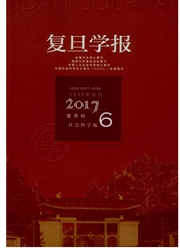

 中文摘要:
中文摘要:
近年来,我国出现了一方面人民币兑美元和日元实际汇率均升值,而中美贸易呈现顺差持续扩大的趋势,中日贸易则出现逆差持续扩大的趋势;另一方面人民币兑美元实际汇率升值,兑欧元实际汇率贬值,但中美与中欧双边贸易均呈现贸易顺差持续扩大的趋势。这与传统的“J”曲线效应理论相矛盾,形成了所谓的“中国贸易收支之谜”。本文采用非平稳时间序列的协整分析方法探讨了人民币实际汇率和贸易收支之间的长期均衡关系,认为“中国贸易收支之谜”的原因在于:中国商品的国外实际汇率弹性与外国商品的国内实际汇率弹性具有显著差异,同时中国商品的外国实际收入弹性与外国商品的实际收入弹性也具有显著差异。导致这一情况出现的深层原因是中国与三个主要贸易伙伴的经济发展水平存在显著差距;此外,欧美等国对华高科技产品出口限制政策也是其对华贸易逆差增长的原因之一。
 英文摘要:
英文摘要:
In recent years, China has experienced a contradiction that although RMB appreciates to both the US Dollar and the Japanese Yen, the Sino-US bilateral trade has a surplus while the Sino-Japan bilateral trade has a deficit; and both the Sino-US bilateral trade and the Sino-EU bilateral trade have surpluses although RMB appreciates to the Dollar while it depreciates to the Euro. This phenomenon is against the traditional theory of the J-curve effect and thus forms the puzzle of China's trade balance. This paper employs the co-integration analysis on the non-stationary time series to explore the long-run equilibrium relation between the RMB real exchange rate and three major bilateral trade balances respectively. The authors argue that the cause of the puzzle lies in the difference between the foreign real exchange rate elasticity of China' s goods and the domestic real exchange rate elasticity of foreign goods; and the difference between the foreign real income elasticity of China's goods the different domestic real income elasticity of foreign goods. And the in-depth reason is that China and its three major trading partners have a different economic development level and the strict hi-tech expert limitation from developed countives is also one of the reasons why the US and the EU have an increasing trade deficit to china.
 同期刊论文项目
同期刊论文项目
 同项目期刊论文
同项目期刊论文
 期刊信息
期刊信息
